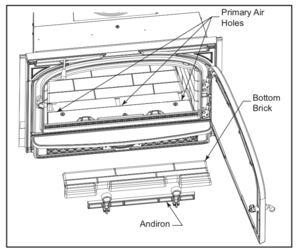Hey everyone - got an interesting question - how to build a small and consistent fire?
Background - I'm burning using a VC Monteplier insert. I tend to keep blower on all the time since I believe in getting max BTUs into the house. Here in CT, past few days the temperature has being hovering around 40F~50F, foggy, damp, and no wind. Not quite warm enough to rely solely on oil, but I easily overheat (75+) the house if I just keep adding splits. Ideally I'd like to have a small hot fire going at all times (hot enough to reliably light up new logs, and also run a clear chimney exhaust ). Wife and I both WFH so we can tend the fire at least on hourly basis.
Couple of scenarios I've ran that did not work are are -
1) Burn full loads - this overheats the house. I end up opening all the windows because it's too hot.
2) Burning splits that are too thick (>2in) - I don't always have good coal bed, and thick splits end up smoldering
3) Burning only 1~2 log at time - this doesn't burn reliably. If I have coal bed it's better, but without coal and primary closed, once wood boils off the fire dies off
Couple of scenarios that had played out well so far
1) Use BioBricks - I wake up in the morning and load 6~8 bricks and light with a few kindling. Good for 4~6 hours of useful heat, but unless I start adding small splits by 3hr mark, oven is not hot enough to reliably light new bricks / logs.
2) Use lot's of smaller woods - ideally 1.5in across, but this is a lot of work adding them in
I've found that when running fuller loads, once wood is burning, I can close off primary air control (no idea how good the oven control is) and the slow dancing flames will keep fire burning. However with smaller loads I seemingly have to keep primary on all the time and never really getting to secondary?
What are your tips / thoughts for keeping a smaller fire going when full loads are not needed?
Background - I'm burning using a VC Monteplier insert. I tend to keep blower on all the time since I believe in getting max BTUs into the house. Here in CT, past few days the temperature has being hovering around 40F~50F, foggy, damp, and no wind. Not quite warm enough to rely solely on oil, but I easily overheat (75+) the house if I just keep adding splits. Ideally I'd like to have a small hot fire going at all times (hot enough to reliably light up new logs, and also run a clear chimney exhaust ). Wife and I both WFH so we can tend the fire at least on hourly basis.
Couple of scenarios I've ran that did not work are are -
1) Burn full loads - this overheats the house. I end up opening all the windows because it's too hot.
2) Burning splits that are too thick (>2in) - I don't always have good coal bed, and thick splits end up smoldering
3) Burning only 1~2 log at time - this doesn't burn reliably. If I have coal bed it's better, but without coal and primary closed, once wood boils off the fire dies off
Couple of scenarios that had played out well so far
1) Use BioBricks - I wake up in the morning and load 6~8 bricks and light with a few kindling. Good for 4~6 hours of useful heat, but unless I start adding small splits by 3hr mark, oven is not hot enough to reliably light new bricks / logs.
2) Use lot's of smaller woods - ideally 1.5in across, but this is a lot of work adding them in
I've found that when running fuller loads, once wood is burning, I can close off primary air control (no idea how good the oven control is) and the slow dancing flames will keep fire burning. However with smaller loads I seemingly have to keep primary on all the time and never really getting to secondary?
What are your tips / thoughts for keeping a smaller fire going when full loads are not needed?



 .....Wife will pop open our slider when it gets to 80, then sits next to the stove in a sweatshirt
.....Wife will pop open our slider when it gets to 80, then sits next to the stove in a sweatshirt